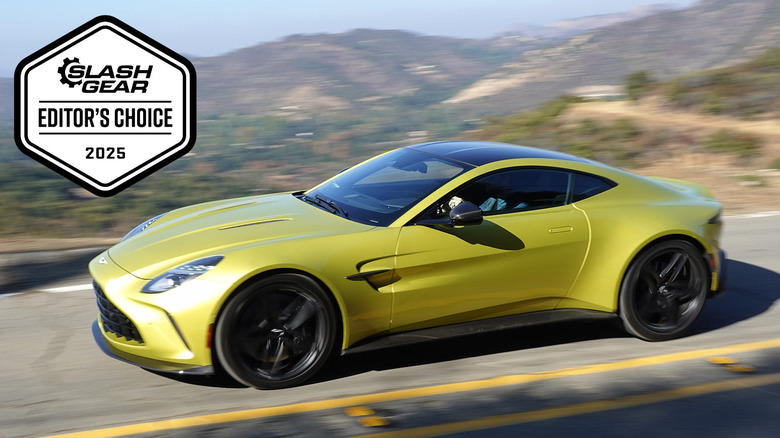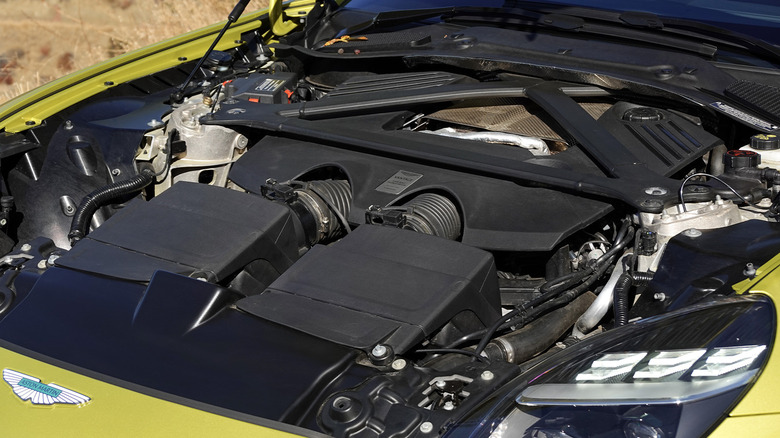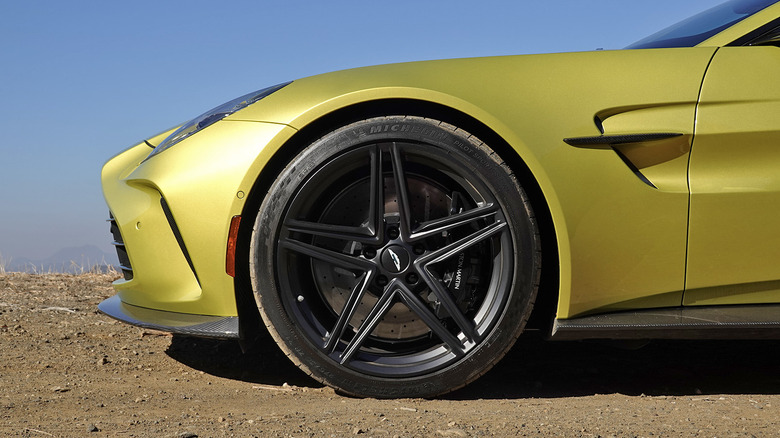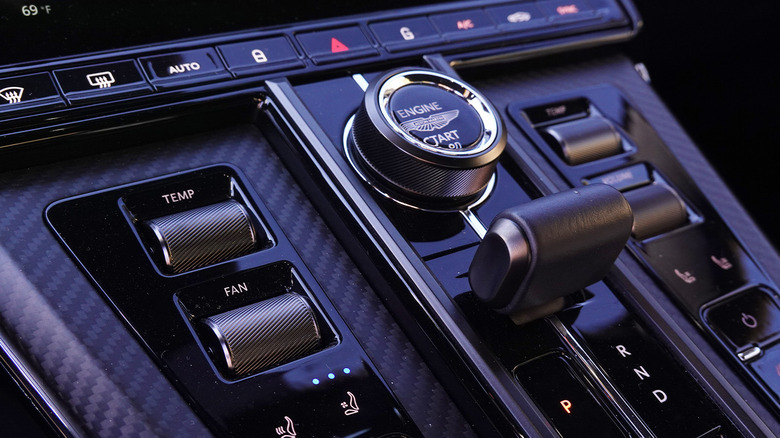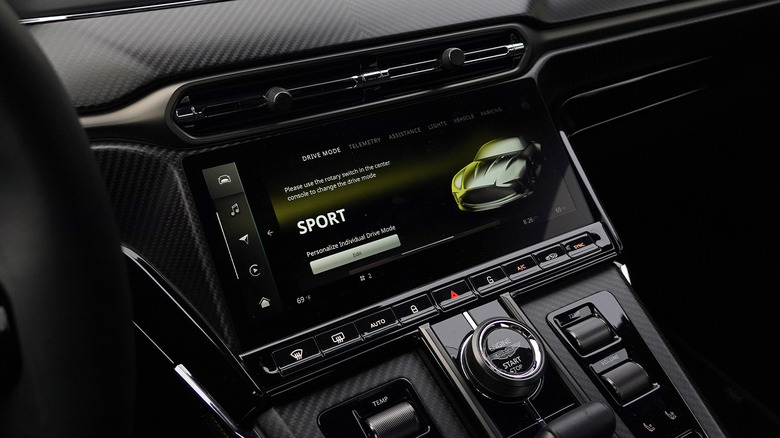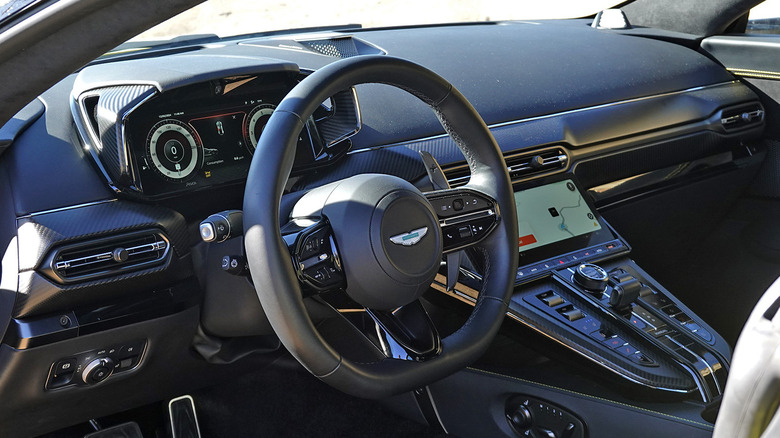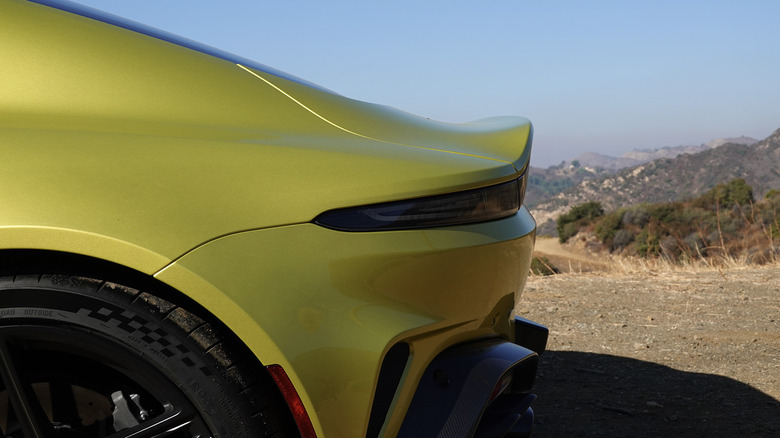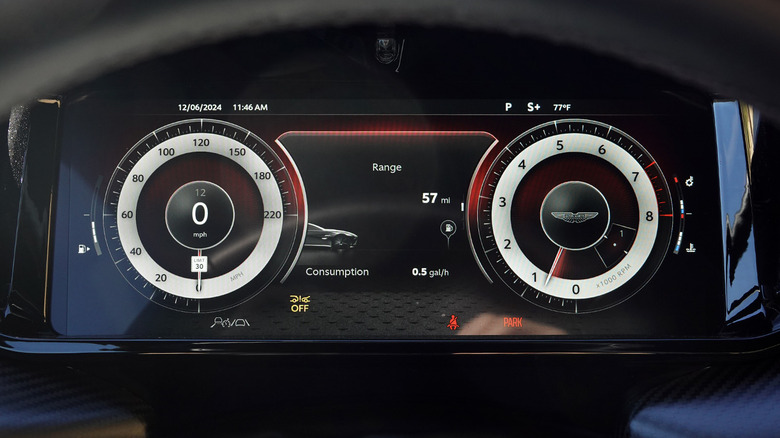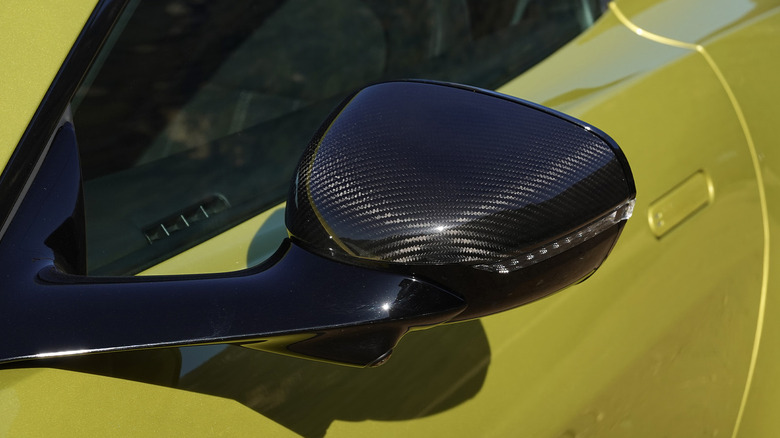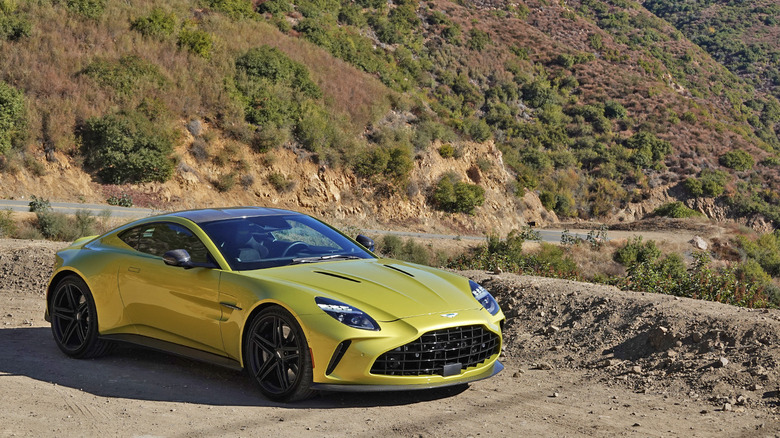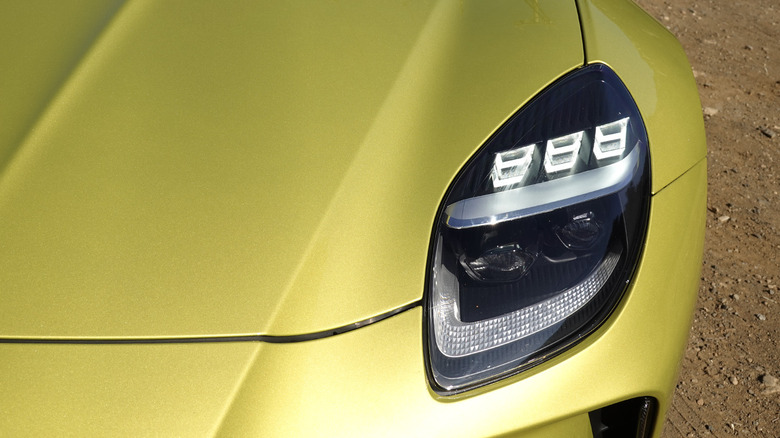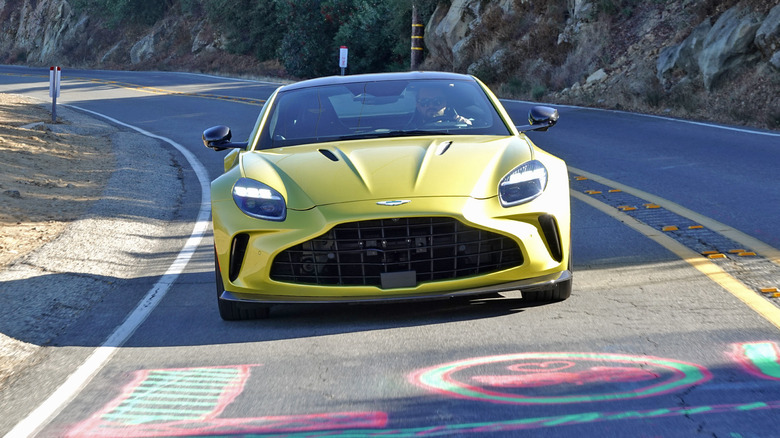2025 Aston Martin Vantage Review: Please Make This The Next Bond Car
- Unbelievable power increase for 2025 facelift
- Interior tech and ergonomics also vastly improved
- Styling somehow gets better, too
- Expensive enough to stay unattainable for most
- Steering feel still on the duller side
- I can't keep it
Sometimes the inspiration to start a car review comes easy. Just wake up in the morning and boom, the whole story emerges as one. A personal connection helps, as in my last Aston Martin piece covering the Vanquish as a revamped flagship that dredged James Bond memories up from my childhood. Other cars make the job a bit more challenging. Take the new Vantage, for example: An absolutely stupendous car that hits every high note, in my professional opinion. If you have the money you should definitely buy one.
Boom, done! And yet, we must dig deeper. Not only because my editor demands more words, but also because the 2025 Vantage deserves deeper thoughts, and so does Aston Martin for developing a vehicle that takes such a massive leap forward from the preceding model year.
Huge horsepower gains
Previously, the only things I knew about the Vantage, Aston's smaller "entry-level" sports car, involved Doug DeMuro and the Formula 1 safety car. Professional considerations, in other words, about sublime looks mixed with stately driving dynamics and a penchant for reliability concerns. This latest facelift definitely delivers the style points, and luckily in the modern era, most cars can run and drive longer and better than ever. But manufacturers also pack new cars with literal miles of electrical wiring, so only time will tell on the reliability front, since very few cars struggle to survive through my (admittedly destructive) week-plus of testing.
More importantly, I took this 2025 Vantage loaner extremely curious to experience the performance increase. Not many mere facelifts manage to up the same engine's output by over 150 horsepower, after all. That curiosity piqued even more after I spoke with Formula 1 safety car driver Bernd Maylander at the Austin GP this year, too. Austin with Aston, a fairytale to say the least. But I wanted to know exactly how hard Maylander pushes the safety car on track during a race to stay ahead of the F1 racers. Is that why Aston needed to ratchet up the Vantage's performance so intensively?
The 2025 model year versus outgoing Formula 1 edition
"A Formula one car is so unbelievably great," Maylander told me, "If I'm going half a second quicker than my race speed, they've not even trying. They don't feel it... Personally, I really like to drive the car on the limit because sometimes it's even easier to drive quick than to drive slow. But sometimes we really have to drive slow, 'cause we have to push the field together to line them up as quick as possible behind me, to give the marshals and everyone who's working on the track more time."
The outgoing Vantage's "F1 Edition" put down 528 horsepower from a 4.0-liter V8 built by AMG. Now, with a bit more help from Aston Martin, that engine can crank out an absurd 656 horsepower. Presumably, adding almost a quarter again the ponies helps Maylander stay ahead of the pack. Instead, Maylander emphasized the improved handling and communicative chassis as quite possibly being more important.
"For sure, horsepower-wise," he commented, "At the top, the power from 535 (PS) to 665, it's a huge, huge step. But now, with the wider chassis, with the wider wheelbase, it's a newly balanced car. That is really nice, it's always good to have a better performance, you feel it immediately. The feedback from the car to the person behind the steering wheel, you get really nice information about what's going on in the car. So that's important to make the right decisions on the steering wheel and the pedal."
Interior and tech take a big step forward
I started reminiscing about the massive update that Aston also gave the 2025 DBX707, which transformed an admittedly quick minivan into my second-favorite super SUV with updated interior ergonomics and tech, plus chassis and transmission tweaks that made all the difference in the world. Those daydreams and the fairytale of visiting Austin with Aston turned into a true peak life experience, though, when this puke green Vantage arrived outside my apartment just a few weeks later.
Larger than expected in person, possibly due to the cramped confines of a small Santa Monica street versus COTA's massively wide open spaces, the Vantage's aero details and massive wheels and enormous carbon-fiber diffuser all amped my imaginings up into a new dimension. Might this end up more in DB12 and Vanquish super-GT, rather than sports car, territory? I also heard it through the grapevine that everyone, bar none, spun out on the press launch. Such hesitations starting to intrude upon my ruminations...
Sliding about in the slippery stuff
There's only one way to find out what 656 horsepower and 590 lb-ft of torque can do in a 3,847-pound Aston, though. And find out I did, while headed up to Malibu on a cold and misty morning as the sun barely started to peek over the horizon, as I ripped out a solid 40-foot slide across two lanes of traffic through full opposite lock as the cold rear tires and damp roads rendered even maybe 15% throttle too aggressive. Luckily, with nobody out and about at that early hour, I simply battened down my hatches and drove a little easier until the car and I warmed up. Nothing to worry about, surely.
For now, anyhow. And I oughtta know better, because my favorite cars these days demand that kind of respect, with so much power but only just enough traction control to form an impression of safety, yet inconsistencies that still allow the urgent spirit to shine through. Think Maserati MC20, even if Aston's traction control programming allows for more discrete adjustment on the Vantage.
Comfy in splendor
But this Vantage's interior represents the real step forward for Aston, especially versus that MC20 that I loved and hated simultaneously. No Fiat-Chrysler switchgear, here; instead, Aston committed to textural metal knobs and dials for just about every touchpoint. The seats kept me securely in place without any sense of claustrophobia from fully rigid buckets, and I even measured plenty of leg and headroom above and ahead of me. Throw in a touchscreen and Apple CarPlay, a la DBX707, and the whole intuitive interior should serve as inspiration for the rest of the industry.
A few warning popups crept in to ruin my moments of reverie, admittedly, and the actual gauge screen layout uses the space somewhat inefficiently. But, as I realized while hammering the Vanquish all over Sardinia, just stop looking at the digital pages and start driving. The same held true by the time I turned off the Pacific Coast Highway and headed up into the hills of Malibu.
Steering and shifting in the modern era
On the way, I started fiddling with dials and drive modes and traction control settings, opening up the exhaust valving to unleash a newly snarling character that prioritizes overrun burble and turbo blowoff drama. The suspension firmed up from fairly soft to rock solid in Sport+ while the steering drew in a few deep breaths to require less physical rotation of the wheel for each degree of tire movement.
As typical of electric power steering these days, the Vantage provides enough precision for a serious sports car but lacks the finer inputs of a hydraulically assisted system. Only Porsche and, somewhat surprisingly, Lucid on the Gravity SUV seem to understand how to do EPS right. I therefore wound up preferring Aston's mid-level steering setting for the best response versus a fully weighted wheel, which only serves to dull down the communication between road, car, and driver.
Just tune out the gauge dials
Taking the time to set up a full custom drive mode might allow for the ideal balance, but mostly I just wanted to find some open canyons and wind up that engine a bit. I also hit the hills curious about the gearbox, since the Vantage receives a different eight-speed ZF transaxle than the Vanquish's dual-clutch, which managed the impressive achievement of almost approaching a Porsche PDK in terms of telepathic snappiness.
The Vantage's transaxle uses a traditional torque converter instead, which imparts just quick and smooth enough shifts to properly harness the newly powerful V8, yet lacks the same lightning-in-a-bottle appeal. I popped the paddles—metal, of course—up and down through the gears repeatedly, struggling to maintain any semblance of professional restraint. To an extent, as the torque built and the exhaust symphony roared and the tires scrabbled for traction, the traction itself kept me in the realm of safety, or at least somewhere near sanity.
Drying out the roads
Not quite sitting with my haunches over the rear axle, as in a Mercedes GT, I nonetheless began to sense when the rear end started to break loose. If the lateral g forces built up enough, and I held the steering wheel steady while feeing in just a bit more throttle, the rear tires simply stepped right out. A quick hit of just an inch or two in either direction with the steering wheel caught the slides, which became predictable by about the seventh time cornering hard. No need to push for another full drift, after all, in a car that stickers for $191,000 to start and an incredible $287,400 as tested.
By about the seventh dalliance with a near drift, I started to emerge from the clouds above the misty Malibu coastline. Drying asphalt urged me to hammer out some harder miles on Latigo Canyon, one of the best roads for any sports car that rides slightly higher than most mid-engine supercars. And here, the Vantage looked, felt, and drove right at home ("You know what's remarkable is how much England looks in no way like Southern California").
The spark of ICE performance
Ripping up Latigo, the Vantage never approached the all-out pace of a hardcore mid-engine car, yet as with all of this era's greats, the sum of the experience more than made up for the lack of undoubtedly illegal speed. Rather than putting out prodigious electric or electrically assisted punch, the ICE 4.0-liter's torque surges and swells through the rev range, never overwhelming nor painful but rather a constantly emotive perception of where and when gasoline and air combine to explode in the perfect fashion. I knew in the back of my mind that using the paddle shifters to keep the transaxle in a lower gear might result in more peak horsepower, but the transition through revs proved too enjoyable to do so all the time.
And even at 4,000 RPM, the Vantage still commands an easy acquaintance with occasional oversteer, despite the width of the 325-millimeter rear Michelin Pilot Sport 5S tires. Again, focus on driving, not the music over the CarPlay or a hawk cruising over the chaparral. Any momentary dalliance with distraction not only might render a day's drive catastrophic, but also does the Vantage a disservice.
Matt Leinart who?
Later, running down to Intuit Dome to catch a Clippers game, the carefree ride height, hatchback storage capacity, tech connectivity, and comfortable seats altogether allowed the Vantage to also serve perfectly as a daily driver. I never needed to worry too much about speed bumps or rough roads, screaming through rush-hour traffic at the speed of light, able to close gaps and skip through lanes lickety-split. I pulled up and the security guard thought I was Matt Leinart, and though I grew up a UCLA fan, that hilarious interaction indicates good taste from the former Heisman winner.
Good taste clearly goes right out the window given the "Cosmopolitan Yellow" paint job of my loaner. Yet Maylander mentioned that a majority of buyers want to spec their Vantages in the dark green of the Aston Martin F1 team and safety car.
2025 Aston Martin Vantage Verdict
"In the end, the important thing for me is that we have a product that really good and drivable," Maylander added, "That's a brand of Formula One, too. I would feel not comfortable if I have a completely different brand as a safety car. I think it must be a brand from the pit lane."
Hopefully, that F1 connection can continue contributing to the popularity of Aston Martin's road cars, so that sales can increase just as much as the cars have improved under the auspices of one particular Lawrence Stroll. A matte silver Vantage over powder-coated wheels suits my eye better, with a black interior and hopefully some more carbon for the interior trim to cancel out some of the piano black plastic.
No racing buckets, though, no matter what Maylander might need, because this Vantage now sits near the top of the list of greatest cars I've ever driven, an utterly stunning combo of style and substance. The personal connection established–to say the least–and coming so near to perfection, counterintuitively optioning the more comfortable seats in a Vantage will presumably reduce the activation energy required to drive Aston's latest and great all day, every day, as James Bond intended.
